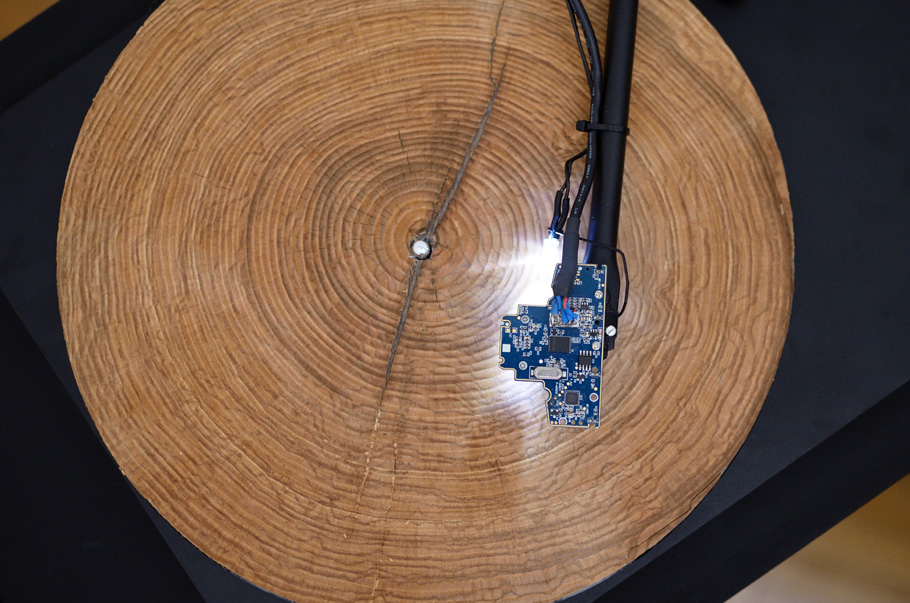
Often, music is the direct translation/transliteration of the artist’s feelings, emotions and thoughts. And Bartholomäus Traubeck took the whole thing to the next level, giving “voice” and musicality to trees.
The rustling of the leaves and the howling of the breeze cut by swinging branches is music indeed, but sometimes we are just uncapable of listening: we often need notes, keys and strings drawing our attention, so that we eventually pay attention. The artist, however, was able to give Nature a louder, stronger voice by using sections of trees.
It is known that, as a tree grows, it develops “rings” in the trunk; if the trunk is cut, it is possible to see these concentric rings. Bartholomäus used these rings, the variations of colour from one to the other, the patterns and other features to give life to his work.
By using a modified turntable whose needle was substituted with a digital camera, he was able to send the data gathered from the section of wood to his computer and then turn it into piano music.

His work resulted in a wonderful album, “Years”, a compilation that features 7 different trees from Austria. Each track is the wonderful voice of a tree, telling his story and his growth in a language we are more used to speak — music.

The whole album is available here, just in case you want to enjoy this unique and intense piece of art.


